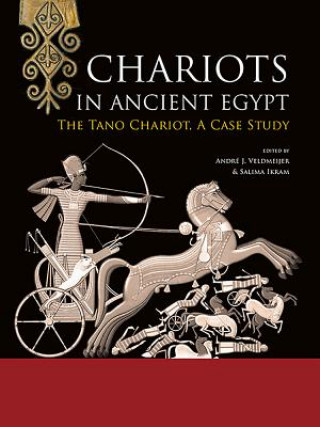
Kód: 16273914
Chariots in Ancient Egypt
Autor Andre J. Veldmeijer, Salima Ikram, Ole Herslund
Chariots, the racing cars of the ancient world, first appeared in Egypt about 1600 BC, and quickly became not only the preferred mode of transport for royalty and the elite, but also revolutionised military tactics and warfare. Re ... celý popis
- Jazyk:
 Angličtina
Angličtina - Väzba: Brožovaná
- Počet strán: 590
Nakladateľ: Sidestone Press, 2018
- Viac informácií o knihe

Mohlo by sa vám tiež páčiť
-

Rap RoMania: Jugendkulturen und Fremdsprachenunt - Band 1: Spanisch/Franzosisch
38.70 € -5 % -

The Spooky Express Arizona
11.23 € -2 % -

Exploration of Writing
50.55 € -

Autobiography of Benjamin Franklin
48.51 € -
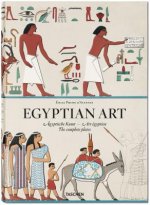
Prisse d'Avennes. Egyptian Art
119.49 € -

Der Kreisauer Kreis
9.59 € -

Shakespeares Welt
32.27 €
Darčekový poukaz: Radosť zaručená
- Darujte poukaz v ľubovoľnej hodnote, a my sa postaráme o zvyšok.
- Poukaz sa vzťahuje na všetky produkty v našej ponuke.
- Elektronický poukaz si vytlačíte z e-mailu a môžete ho ihneď darovať.
- Platnosť poukazu je 12 mesiacov od dátumu vystavenia.
Viac informácií o knihe Chariots in Ancient Egypt
Nákupom získate 511 bodov
 Anotácia knihy
Anotácia knihy
Chariots, the racing cars of the ancient world, first appeared in Egypt about 1600 BC, and quickly became not only the preferred mode of transport for royalty and the elite, but also revolutionised military tactics and warfare. Remains of chariots have been found in Egyptian tombs -Tutankhamun's tomb contained six chariots, which tripled the number of ancient Egyptian chariots known before the discovery of his tomb. However, none of the chariots was complete, as all lacked their leather casings, which were only known from images on tomb and temple walls. In 2008, the Ancient Egyptian Leatherwork Project (AELP) working in the Egyptian Museum in Cairo, found a cache of several trays of red and green leather containing some 60 large leather fragments. Some of these had been noted before, but the find had been largely ignored and buried in the depths of the museum. This remarkable object entered the museum in 1932, a purchase from the Tano family, reputable dealers at that time, hence the nick-name 'Tano Chariot'. The Tano leather all came from a single chariot, including portions of the bow-case, the body's casing and the horse housing. The leather is elaborately decorated in appliquéd green and red or beige leather. Parallels for some of these fragments are found in the Egyptian Museum in Cairo, the Metropolitan Museum of Art in New York, and the Ägyptisches Museum und Papyrussammlung in Berlin, many of which, until their appearance in this volume, are unpublished. This includes the chariot leather from the tombs of Amenhotep II, III, Tutmose IV and Tutankhamun. This book presents the Tano material with fully illustrated, detailed descriptions. Chariot related texts and technological analyses - together with detailed comparisons with other chariots and associated leather remains - help provide possible dates for it. The find is put into context with chapters on relevant hieroglyphic texts, and a study of representations of chariots that help identify the various parts, and highlight the role of the chariot in Egyptian religion, propaganda, and culture. The Tano Chariot leather, despite being unprovenanced, is a unique find, which reveals a great deal about ancient Egyptian leatherwork technologies, warfare, weapons, and chariotry. Contents Analysis 1 Introduction 2 Identification of Parts 3 Chariot Leatherwork Technology 4 Fitting the Pieces 5 Chariots of the New Kingdom: Context of Use and Iconography 6 Chariots in Texts, Writing and Language of New Kingdom Egypt 7 Changes over Time 8 Discussion Catalogue Tomb of Amenhotep II Tomb of Tutmose IV Amenhotep III Tano Main Casing Siding Fill Suspension Straps Nave Hoops Bow-Case Harness Unidentified
 Parametre knihy
Parametre knihy
Zaradenie knihy Knihy po anglicky Humanities Archaeology Archaeology by period / region
206.11 €
- Celý názov: Chariots in Ancient Egypt
- Autor: Andre J. Veldmeijer, Salima Ikram, Ole Herslund
- Jazyk:
 Angličtina
Angličtina - Väzba: Brožovaná
- Počet strán: 590
- EAN: 9789088904660
- ISBN: 9088904669
- ID: 16273914
- Nakladateľ: Sidestone Press
- Hmotnosť: 1602 g
- Rozmery: 278 × 210 × 28 mm
- Dátum vydania: 30. April 2018
Obľúbené z iného súdka
-

Lifeways of Hunter-Gatherers
34.41 € -16 % -

Lost Technologies of Ancient Egypt
22.26 € -15 % -

Magicians of the Gods
15 € -11 % -

Egyptian Hieroglyphs for Complete Beginners
16.54 € -11 % -

Horse, the Wheel, and Language
30.22 € -4 % -

War before Civilization
23.69 € -

Petra
8.98 € -23 % -

Cat in Ancient Egypt
12.25 € -23 % -

Complete Pompeii
21.95 € -23 % -
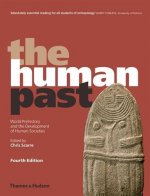
Human Past
71.49 € -

Scenes from Prehistoric Life
27.36 € -23 % -

Across Atlantic Ice
44.32 € -

Book of Enoch
34.51 € -4 % -

Timewalkers
20.72 € -

Creating the Human Past
42.28 € -

Resurfacing the Submerged Past
74.55 € -

Mesolithic Europe
153.91 € -
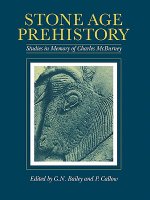
Stone Age Prehistory
52.90 € -

Lindow Man
16.23 € -

Her Cup for Sweet Cacao
67.40 € -10 % -

American Beginnings
93.04 € -

Against the Grain
20.21 € -12 % -

Dress Accessories, c. 1150- c. 1450
36.25 € -14 % -

Rise of Bronze Age Society
85.99 € -

Lewis Chessmen: Unmasked
10 € -14 % -

Neanderthals Among Mammoths
209.38 € -

Biblical Archaeology: A Very Short Introduction
10.10 € -22 % -

Bible Unearthed
21.95 € -

Seismosaurus
115.82 € -

Treasures of the Valley of the Kings
33.29 € -7 % -

Divine Creatures
25.83 € -1 % -

Tutankhamun
32.67 € -23 % -
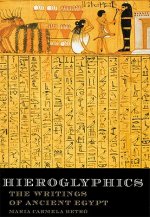
Hieroglyphics
29.81 € -5 % -
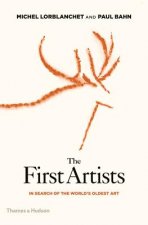
First Artists
21.85 € -23 % -

In Search of the Indo-Europeans
31.35 € -12 % -

Performance Power and the Art of the Aegean Bronze Age
62.40 € -

Tasting the Past
27.16 € -5 % -

Classical Archaeology 2e
43.71 € -4 % -

Upper Pleistocene Prehistory of Western Eurasia
89.06 € -

Humans at the End of the Ice Age
214.07 € -

Medieval European Coinage: Volume 14, South Italy, Sicily, Sardinia
98.66 € -

Prehistory: A Very Short Introduction
11.53 € -12 % -

Mochlos IB
129.20 € -

Salt in Prehistoric Europe
37.58 € -

Prehistoric Rock Art
34.51 € -15 % -

Medieval Household
58.62 € -3 % -

Complete Cities of Ancient Egypt
30.84 € -13 % -

First Signs
13.27 € -23 % -

Mesolithic Europe
75.27 €
Osobný odber Bratislava a 2642 dalších
Copyright ©2008-24 najlacnejsie-knihy.sk Všetky práva vyhradenéSúkromieCookies



 21 miliónov titulov
21 miliónov titulov Vrátenie do mesiaca
Vrátenie do mesiaca 02/210 210 99 (8-15.30h)
02/210 210 99 (8-15.30h)